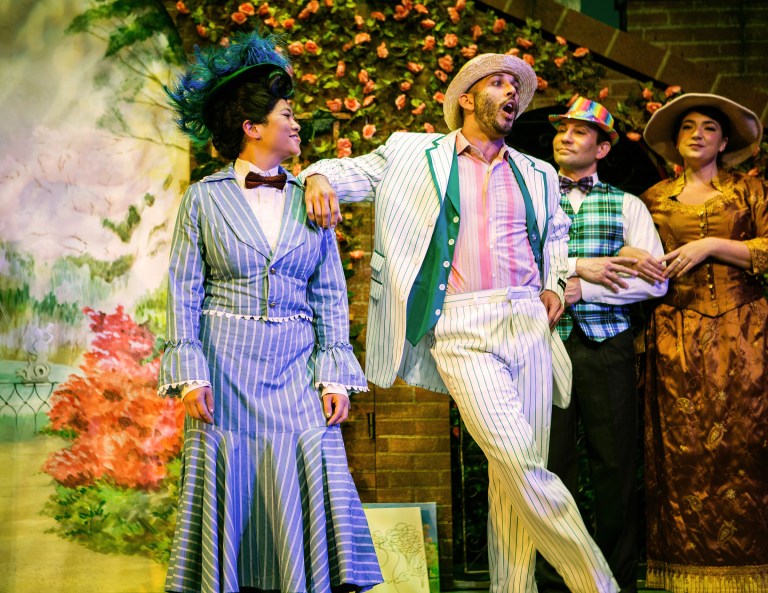SF Playhouse excels at plays, but I’ve remained relatively unimpressed with its works of musical theater. However, the theater’s production of “Mary Poppins” provides a welcome exception. “Mary Poppins” is also a highly unconventional choice of musical—originally performed in 2004, it never really became popular for professional theaters to perform; however, the iconic story makes it a hit for local and regional theaters, especially catering to younger audiences. Beginning on West End, it moved to Broadway and then to a UK and US tour; 2019 also marks a West End revival of the musical.
The original Mary Poppins film introduces the titular nanny as a sprightly character beloved by the children. However, in the book, she’s depicted as the enforcer of the household—and the musical stays more true to this version than to the film and its subsequent sequel. In many ways, Mary Poppins (El Beh) is unlikeable—demanding and curt, to-the-point and “practically perfect” (hence, the song)—in many ways, she’s also competition for the children. But once they realize she can introduce them to a whole new world of colors and fantasies, she quickly makes them understand how good being good can really be.
Beh shines as Mary Poppins, striking a perfect balance between stern and friendly. As the notable lead character of color amidst the white Banks family, Beh’s casting marks a smart choice for the production and adds a whole new layer of meaning for the story. As an outsider, Poppins is shunned and scorned, yet she ultimately is the one to bring a layer of meaning to the lives of the children. Their lives are forever changed by Poppins, and her influential touch and services are needed in the household of others. Beh transcends Poppins’ place as a glorified babysitter, taking power from Mr. Banks as the controlling employer to giving the Banks family a gift—she reforms the children, brings a sense of stability to the household and makes the lives of everyone so much easier.
Bert is played by Wiley Naman Strasser, who whimsically bounds across the stage and serves as the musical’s narrator. He takes us into a place between reality and fantasy—when we’re with him, we’re never in the house, nor are we outside; we simply exist. The musical itself doesn’t have any particularly memorable group numbers (no fault of the production itself), but SF Playhouse brings them to life as much as possible in a series of colorful dances (choreography by Kimberly Richards). The feel of the musical is brought together by the ensemble—the real becoming the unreal, the impossible being made possible.
With an enviable rotating platform and beautiful indoor sets of early 1900s England (scenic design by Nina Ball), SF Playhouse brings its signature flair to its productions. Special effects director Mike “Miguel” Martinez also makes a compelling case for why SF Playhouse should keep doing bigger-budget, spectacle-oriented productions. From Beh flying across the stage with her umbrella, Mary Poppins’ bag that holds her endless supply of goodies and various contraptions that make the production come to life, Martinez brings life to what is so iconically Mary Poppins.
There is something to be said about bringing something new to older, lesser-known works. SF Playhouse has made its mark in the Bay Area as it brings new works to life and brings new meaning to iconic works in the Western canon. “Mary Poppins” is such a work, fulfilling its mission and cementing SF Playhouse’s place as one of the Bay’s beloved theaters.
Contact Olivia Popp at oliviapopp ‘at’ stanford.edu.
